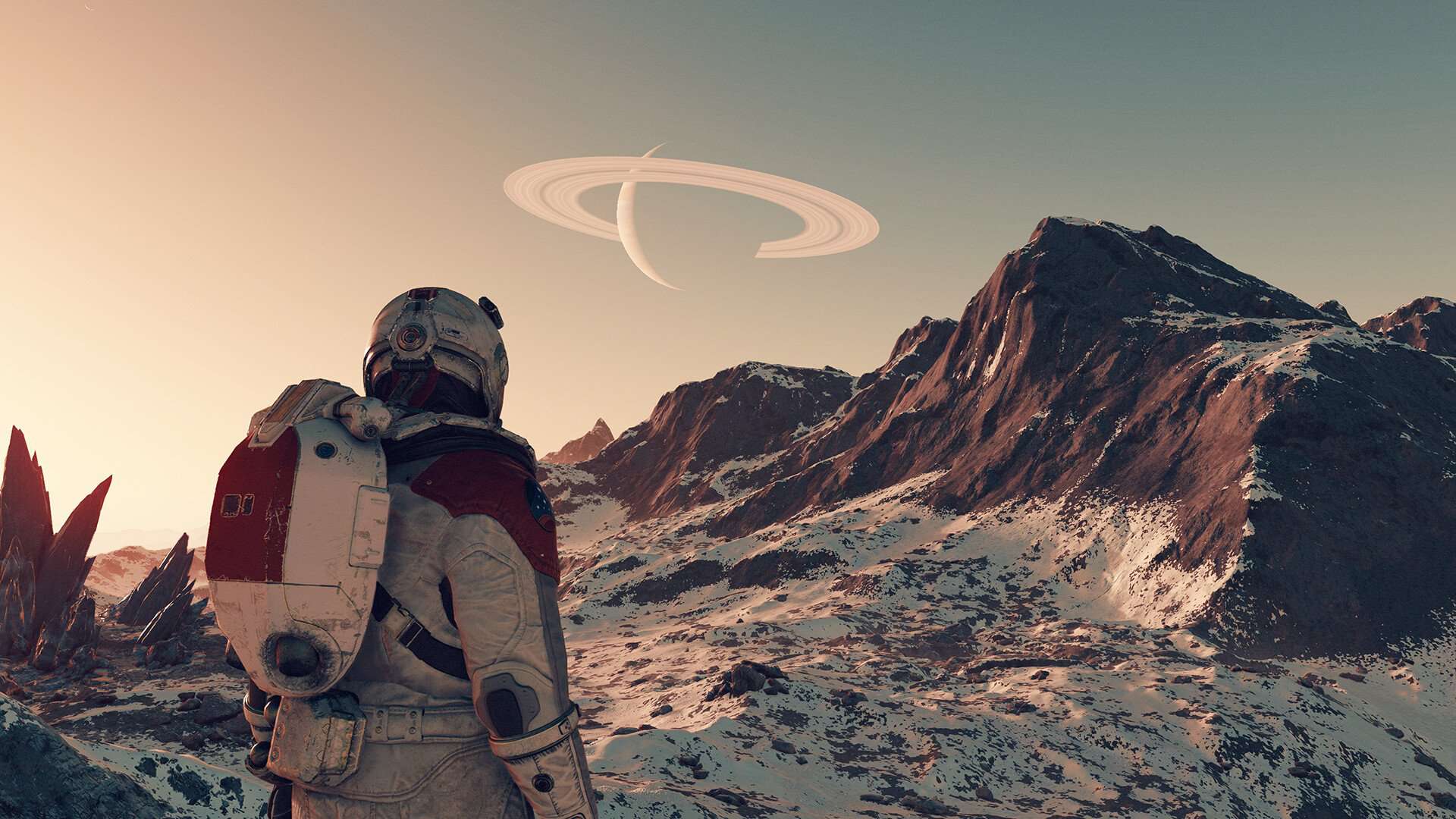In gaming, everyone loves an open world. There’s nothing quite like getting lost in a vast world beyond comprehension, and discovering all of the tiny secrets that developers have left for players to find.
To celebrate, we wanted to take a look at the 30 biggest open worlds in video game history. If you’re looking for new worlds to explore, you might find something that takes your fancy right here.
30. Final Fantasy X (2001)
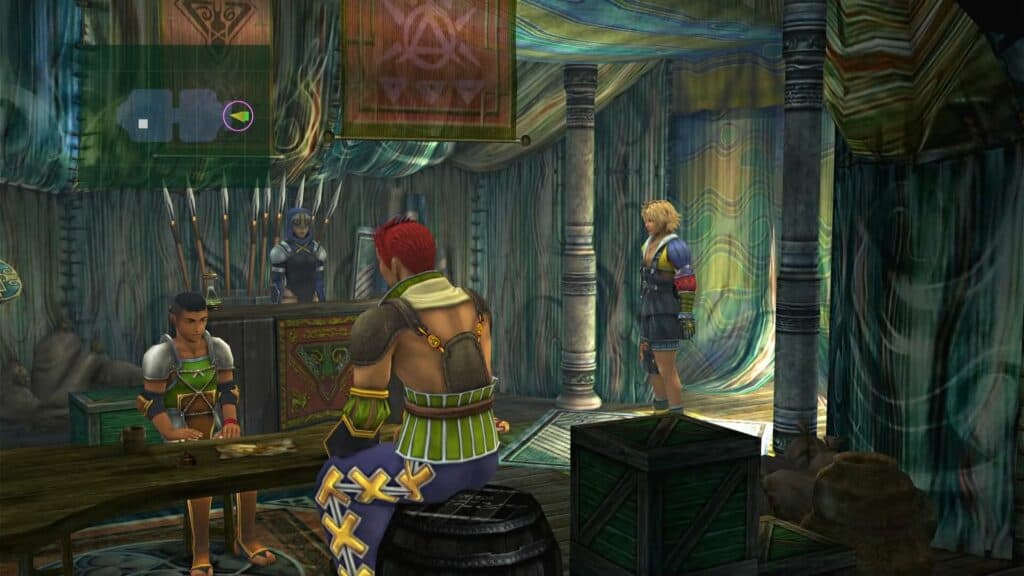
©Screenshot from Final Fantasy X.
- Size: 49 miles²
Explore the world of Spira in Final Fantasy X, which takes some heavy inspiration from real-world locations such as Thailand and Japan. The game spans three subcontinents, as well as various small islands, and ultimately, it takes up around 49 miles² of space. Given the level of detail included in Spira’s various climates, it’s an impressive effort from Square. But it isn’t the biggest map you can find in the Final Fantasy series.
29. Final Fantasy XI (2002)
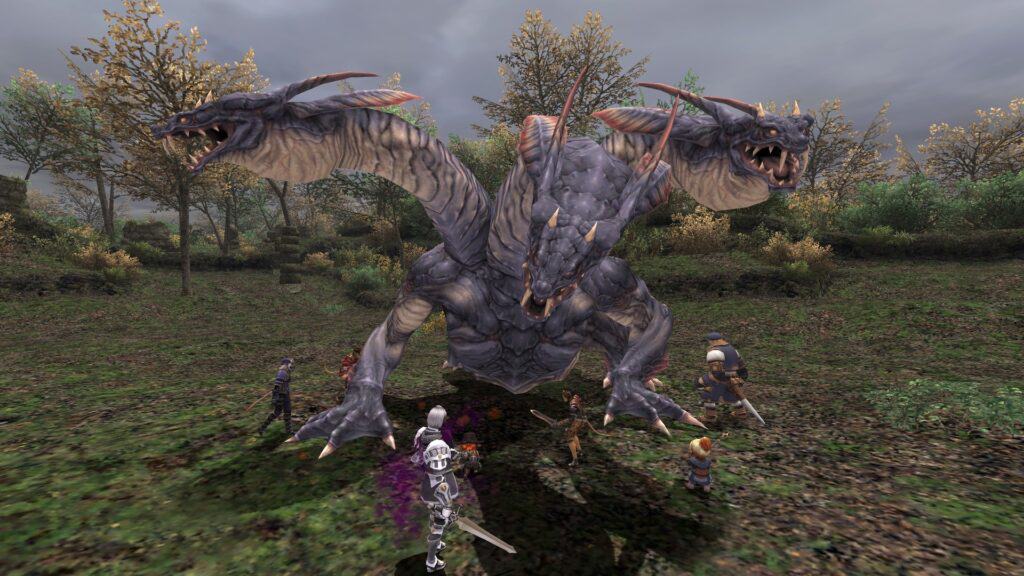
- Size: 70 miles²
Although Final Fantasy XI was released just a year after its predecessor, it doesn’t have a whole lot in common, including the setting. This title is an MMORPG, compared to the single-player nature of the previous title, so naturally, it is designed for more players to inhibit the world at once. This time, the game moves away from Spira and into the world of Vana’diel, which has 70 miles² of land to explore. It’s not the biggest MMO on this list, and again, it’s not the biggest Final Fantasy game. Still, it’s impressive for one series to have multiple entries here.
28. World of Warcraft (2004)
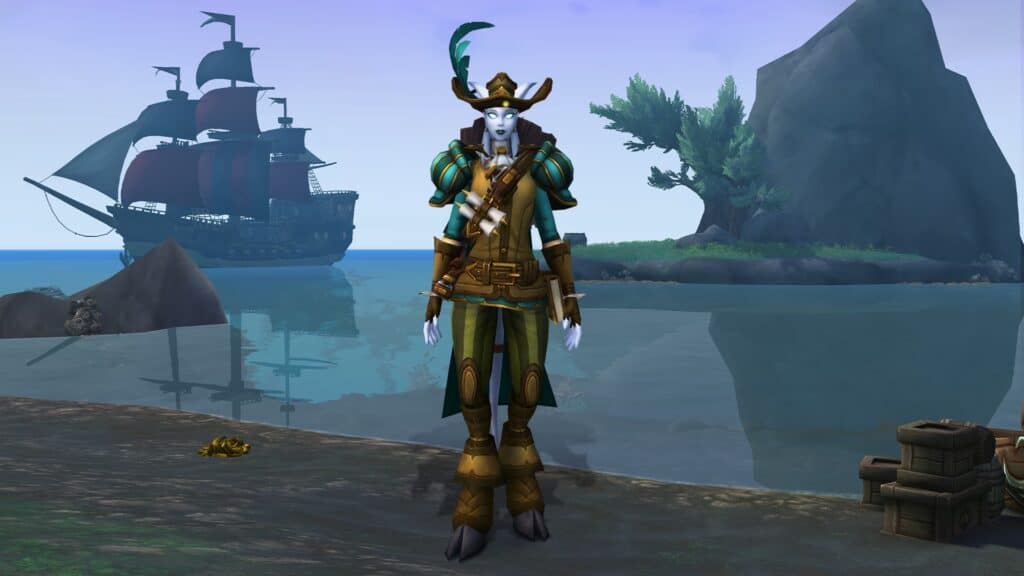
- Size: 80 miles²
Another MMO, this time arguably the most successful of all time. World of Warcraft is a classic, and remains extremely active to this day, putting you into the land of Azeroth and its continents. With the expansions over the years, Blizzard has continued to expand on Azeroth, one of the most memorable game worlds ever created. Now sat at a playable space of 80 miles², World of Warcraft remains one of the biggest games out there.
27. The Witcher 3: Wild Hunt (2015)

- Size: 84 miles²
The world of The Witcher 3 is known as the Continent, a vast land caught up in a dangerous war. CD Projekt Red’s masterpiece spans a large 84 miles², although it isn’t technically open world in the way that other games are. Instead, The Witcher 3 has different zones that you need to travel to, each of which has its own cities and settlements. You can explore the city of Novigrad, fight through the no man’s land of Velen, or head straight to the Skellige island – the choice is yours. It just won’t be seamless, like other open-world games.
Despite this small technicality, The Witcher 3‘s massive world is one of the greatest ever created for a video game. Scale never takes priority over detail, with plenty of hidden secrets for you to find littered around the world. Almost a decade after its original release, it remains a must-play for RPG fans.
26. Arma 2 (2009)
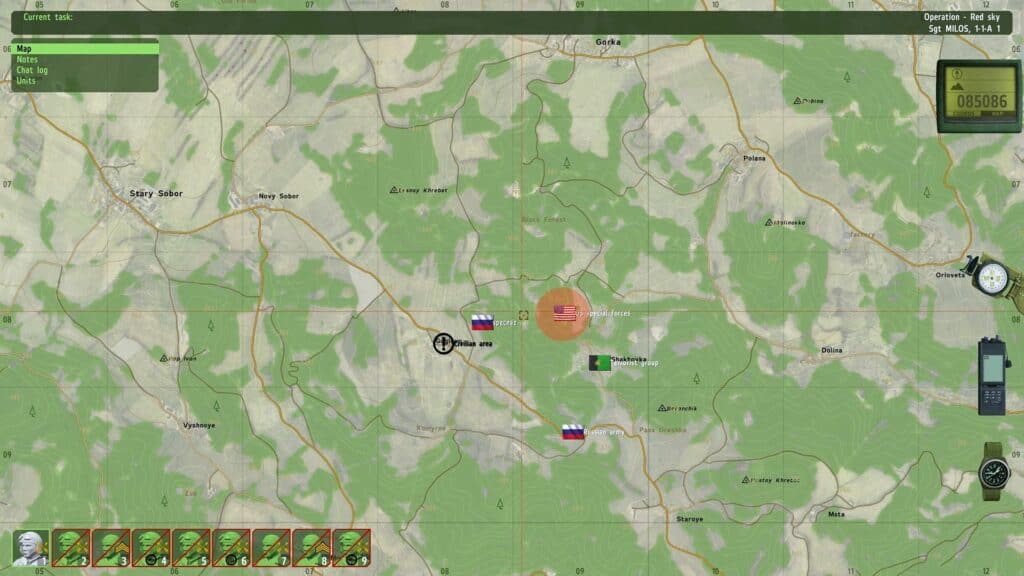
©Screenshot from Arma 2.
- Size: 87 miles²
When you step foot into any game world created by Bohemia Interactive, prepare to be overwhelmed. Arma 2 was released in 2009, bringing the mil-sim genre to another level. The game takes place in Chernarus, a fictional Eastern European region with a distinct brutalist aesthetic. In total, there are 87 miles² of land to explore, with various types of transportation to help you navigate the huge space.
Still, there’s value in walking the distance of Chernarus. It takes you through many different types of landscape, with combat occurring throughout both rural and urban areas for a change of pace.
25. Assassin’s Creed IV: Black Flag (2013)
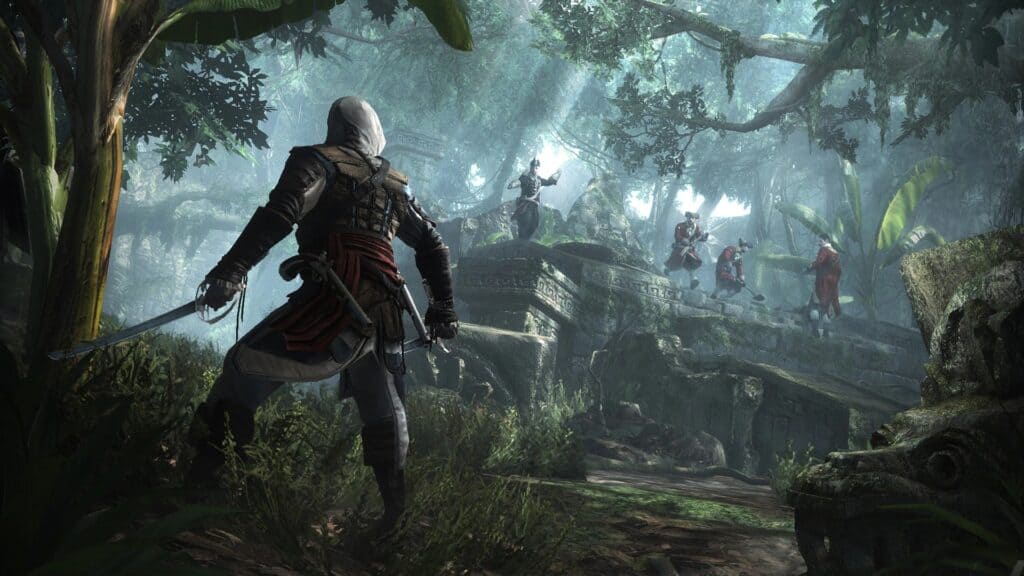
- Size: 90.2 miles²
Set sail across the Caribbean on a beautiful 90.2 miles² recreation of the West Indies, in a swashbuckling pirate adventure you won’t soon forget. 2013’s Assassin’s Creed IV: Black Flag was the first game in the series to prioritize the sailing mechanic, after it first appeared during a mission in Assassin’s Creed III. As a result, the map was massively expanded to account for this. It was by far the biggest playable space the series had to offer, giving players a huge change of pace to what they had been accustomed to at that point.
Because the sea takes up such a sizable portion of the playable space, Ubisoft included plenty of things to do. You can harpoon huge sea animals, and engage in naval combat against rival ships. You can even customize your own ship, the Jackdaw. The sea isn’t wasted space here – in fact, it’s arguably the most lively part of the world.
24. Assassin’s Creed Odyssey (2018)
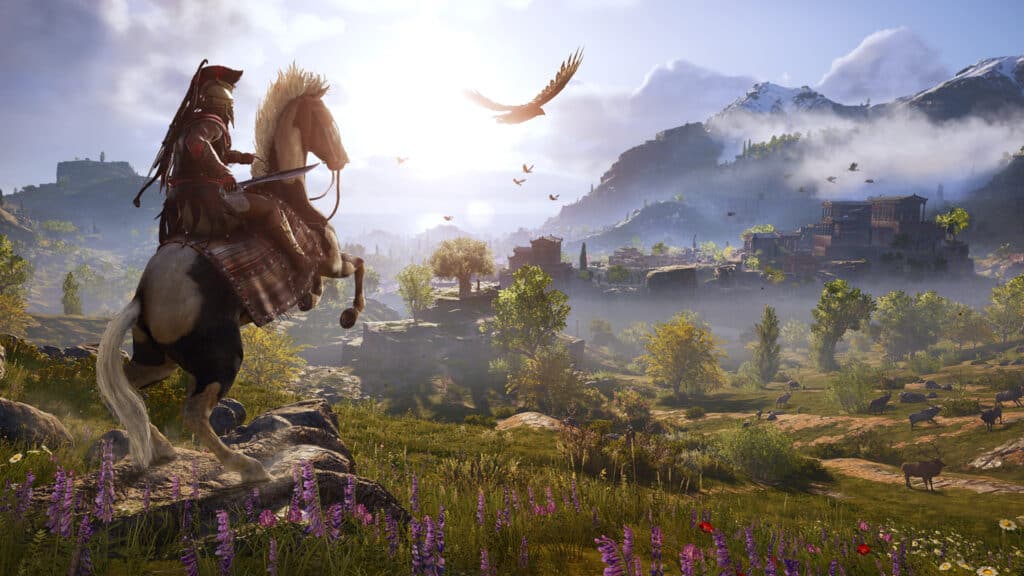
- Size: 98 miles²
Assassin’s Creed Odyssey puts you at the heart of the Peloponnesian War between Athens and Sparta, and offers up a massive rendition of Ancient Greece as its playground. With the naval combat from previous Assassin’s Creed games making a return, you can sail between the Greek islands, exploring the secrets hidden away by Ubisoft. You might even encounter a few mythical creatures, here and there.
There’s no denying that a lot of Assassin’s Creed Odyssey‘s 98 miles² map is inflated by the sea, but don’t be mistaken – there’s a ton of landmass here. In addition to this, the sea sections of the game have enough to offer in terms of gameplay that it never feels like wasted space.
23. Arma 3 (2013)
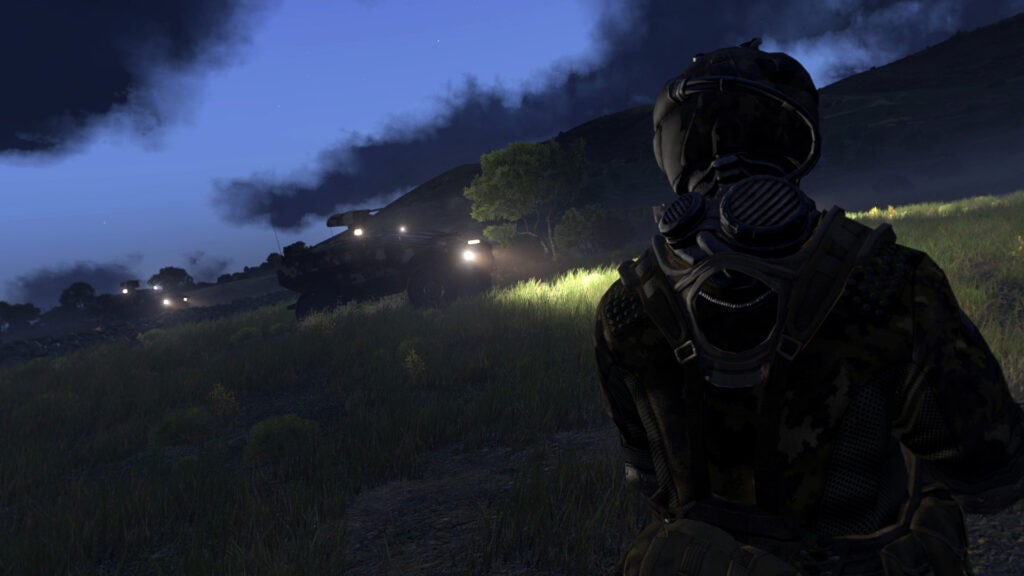
- Size: 103 miles²
Bohemia Interactive’s mil-sim Arma 3 drops you in the middle of a war-torn island named Altis, which spans a massive 103 miles². For this, the game offers various methods of transport, including by air in military helicopters. Seeing the island’s sheer size all at once is an experience not soon forgotten, and the perfect backdrop for the action presented in Arma 3.
While Arma 3 now offers a few different maps to explore, it’s launch map Altis that remains the biggest. The only criticism you could really level at Altis is that too much of the action is centered around concentrated areas of the map, with a lot of empty space in between.
22. Ghost Recon Wildlands (2017)
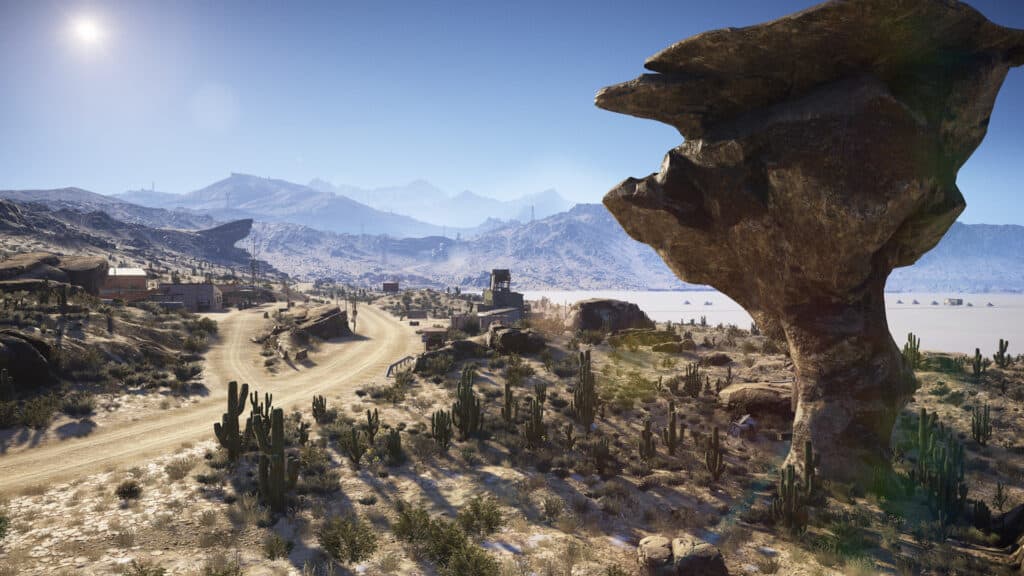
- Size: 105 miles²
Ghost Recon Wildlands is the first game in the series to include an open world, and for a debut, it’s a herculean effort. With swathes of mountain ranges and a strong variety of different biomes in its version of Bolivia, all 105 miles² of Ghost Recon Wildlands‘ map works in tandem with the dynamic weather and day/night cycle to create a unique shooter experience.
The 2017 title isn’t the biggest open world in the Ghost Recon series. That title goes to its successor, which we’ll get onto soon enough.
21. Operation Flashpoint: Dragon Rising (2009)
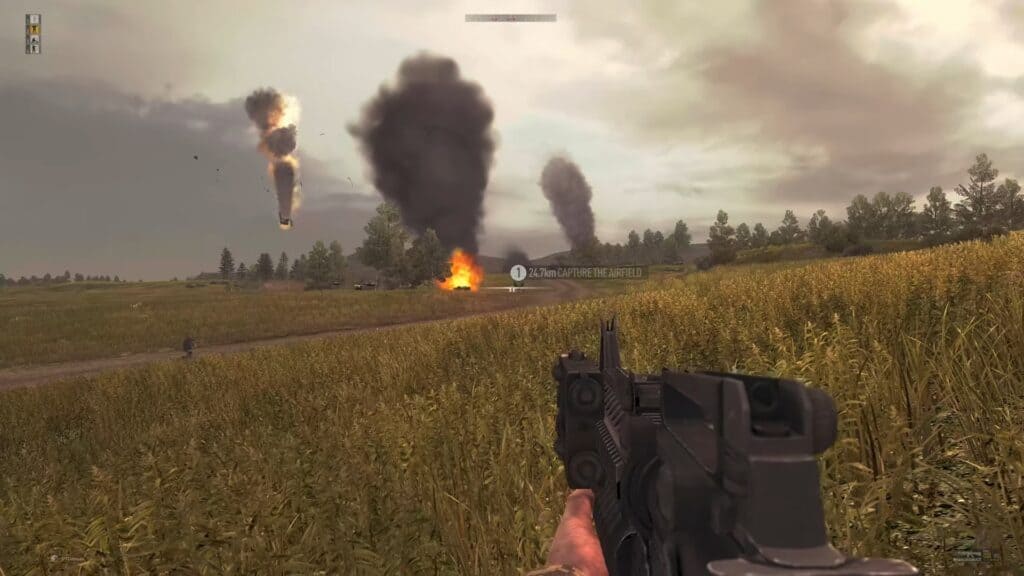
©Screenshot from Operation Flashpoint: Dragon Rising.
- Size: 135 miles²
Operation Flashpoint: Dragon Rising is based on the fictional island of Skira, taking heavy inspiration from Kiska, in Alaska. This detail comes all the way down to the shape of the terrain, which resembles the real place across its 135 miles² game world.
One notable thing about Skira is that it’s an awful lot of green. Civilization is sparsely encountered, meaning despite the hills and mountains that litter the environment, combat often feels a little same-y at times.
20. Xenoblade Chronicles X (2015)
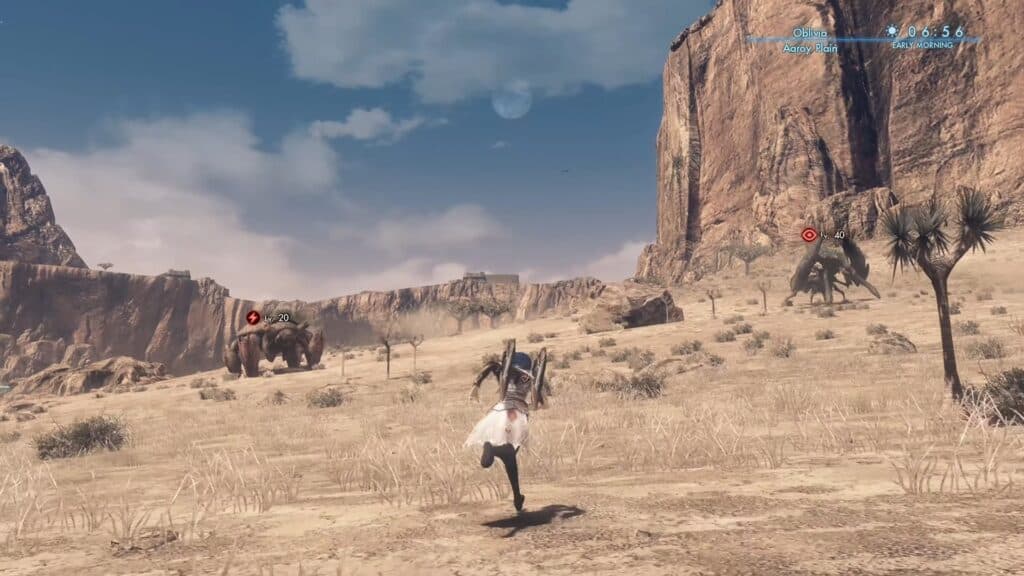
©Screenshot from Xenoblade Chronicles X.
- Size: 154 miles²
As the new home of humanity, Xenoblade Chronicles X‘s Mira had a lot to portray using the power of the Wii U. We can’t fault the ambition of developer Monolith Soft, who gave players a huge 154 miles² to play within.
The world itself is divided into five different continents: Primordia, Noctilum, Oblivia, Sylvalum, and Cauldros. Each of these continents features wildly different biomes, giving each section of the game a new flavor. It’s entirely open world too, so you can return to one continent after reaching another. Considering the Wii U was generally seen as quite a weak platform even at the time of its release, it’s impressive that it has even one game on this list.
19. Star Wars Galaxies (2003)
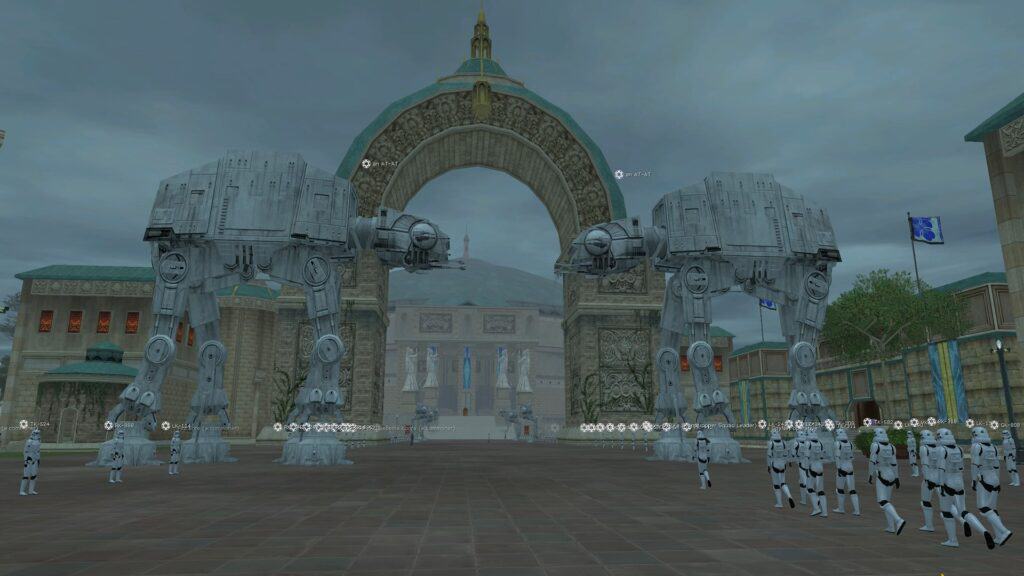
©Screenshot from Star Wars Galaxies.
- Size: 200 miles²
The now-defunct MMO, Star Wars Galaxies, put you right at the heart of the gargantuan Star Wars universe. It initially launched with just 10 planets, although expansions meant that even more were released as time passed. All were based on iconic locations from the movies and Expanded Universe, and by the time all was said and done, the game had 200 miles² of Star Wars to explore.]
Unfortunately, Star Wars Galaxies‘ servers were shut down in 2011. However, there is no shortage of private emulators that bring the game back in some capacity for those who want to experience it all over again.
18. Burnout Paradise (2008)
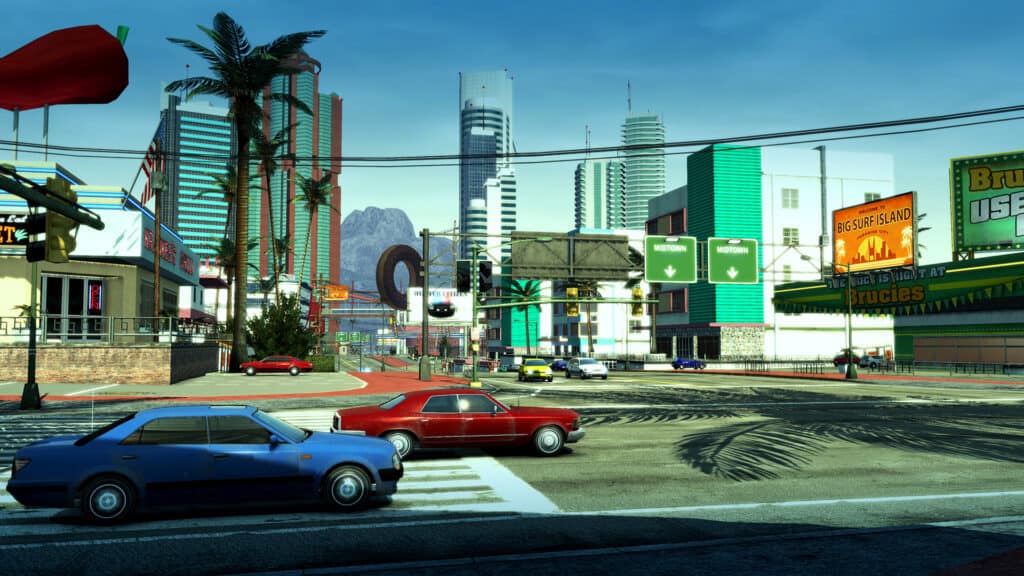
- Size: 200 miles²
We’re heading down to Paradise City, where the grass is green, and… we think you know the rest. Burnout Paradise puts you in Paradise City, with a total of 200 miles² to drive around and explore. Littered around the city, there are plenty of races and other game modes to compete in, ensuring the world always feels fresh and interesting. For a racing game released in 2008, it’s extremely ambitious.
17. Death Stranding (2019)
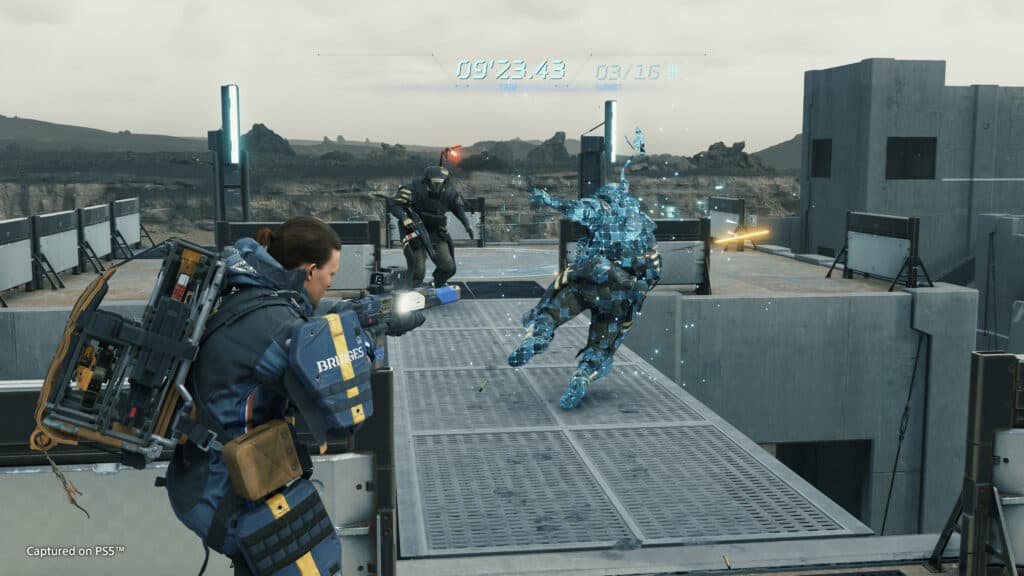
- Size: 230 miles²
The latest masterpiece from director Hideo Kojima, Death Stranding takes place in an apocalyptic rendition of the United States. The country has been devastated by creatures called the Beached Things, leaving only Knot Cities as the last bastions of civilization.
In total, Death Stranding sits at 230 miles² of content. Such is the nature of the game, a lot of it is wide open space, and not often at the heart of the action. Even still, you can feel the love and detail that has gone into every inch of the game.
16. True Crime: Streets of LA (2003)
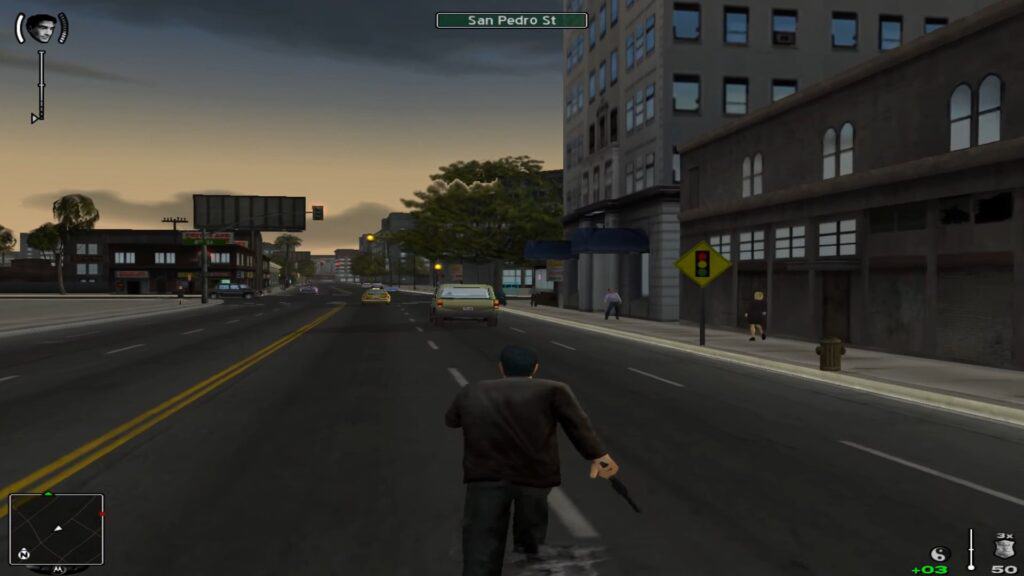
©Screenshot from True Crime: Streets of LA.
- Size: 240 miles²
What True Crime: Streets of LA manages to achieve for 2003 is remarkable. The game recreates much of Los Angeles, including Beverly Hills and Santa Monica, even having most street names and highways be fully accurate to the real world. It’s a level of detail you very rarely see even two decades later – never mind on the PlayStation 2 and Xbox.
Naturally, this means that True Crime: Streets of LA is a pretty huge game world, coming in at around 240 miles² of playable space. Nowadays, you might find more detailed open worlds out there, but you can’t fault the ambition of this title.
15. Just Cause 3 (2015)
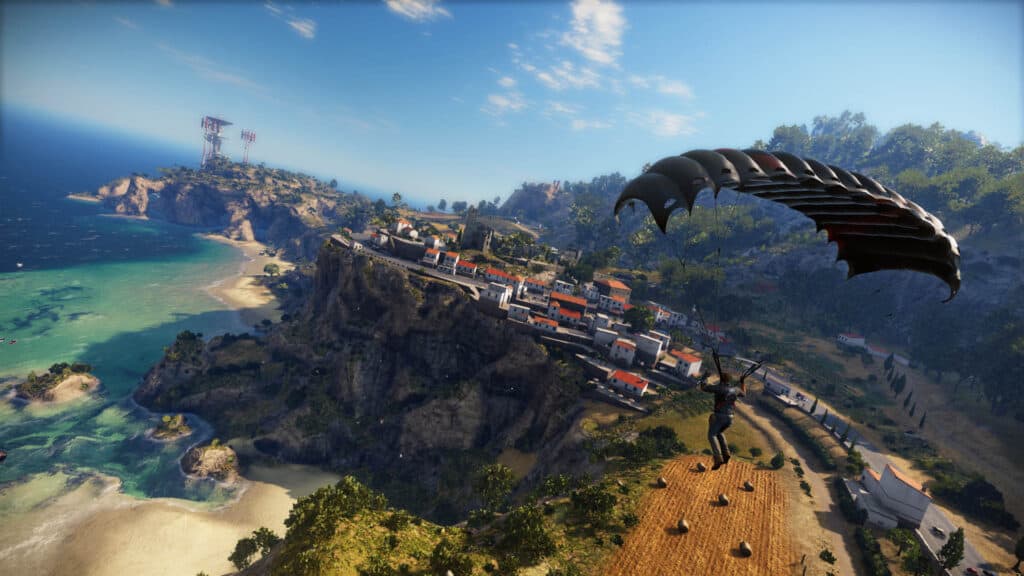
- Size: 400 miles²
Just Cause 3 is chaos incarnate. The game’s setting, Medici, provides a sandbox of 400 miles² in playable space, in which players can cause mayhem and mischief. Medici is a Mediterranean island that gives you the tools to creatively destroy the environment around you, across five different biomes with unique terrain and landmarks.
The huge scale of the map in Just Cause 3 never feels quite as big as it really is. This is because of the traversal methods, which do a great job of helping you move around the map as fast as possible. If you’re someone who thrives in chaos on a large scale, this is one you can’t miss.
14. Test Drive Unlimited 2 (2011)
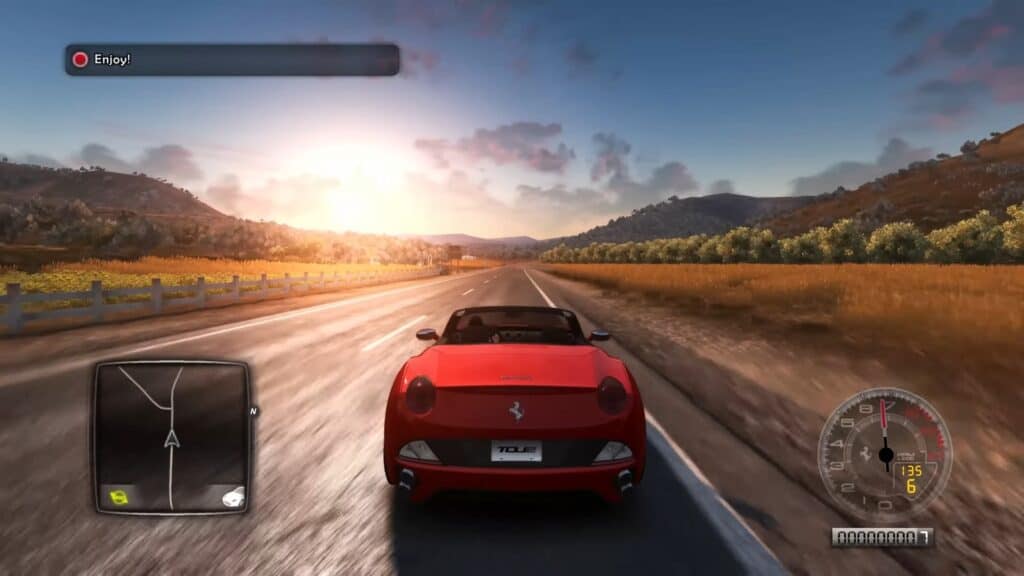
©Screenshot from Test Drive Unlimited 2.
- Size: 618 miles²
Test Drive Unlimited 2 takes place across two islands: Oahu and Ibiza. While these islands were created using accurate satellite data, they haven’t been created perfectly to scale. Instead, they come in at around 618 miles². For what the game wants to achieve, this is plenty, and would probably feel too large if it were much bigger.
In many ways, Test Drive Unlimited 2 is a spiritual predecessor to Forza Horizon. But it still has a bigger map than any game in that series.
13. Final Fantasy XV (2016)
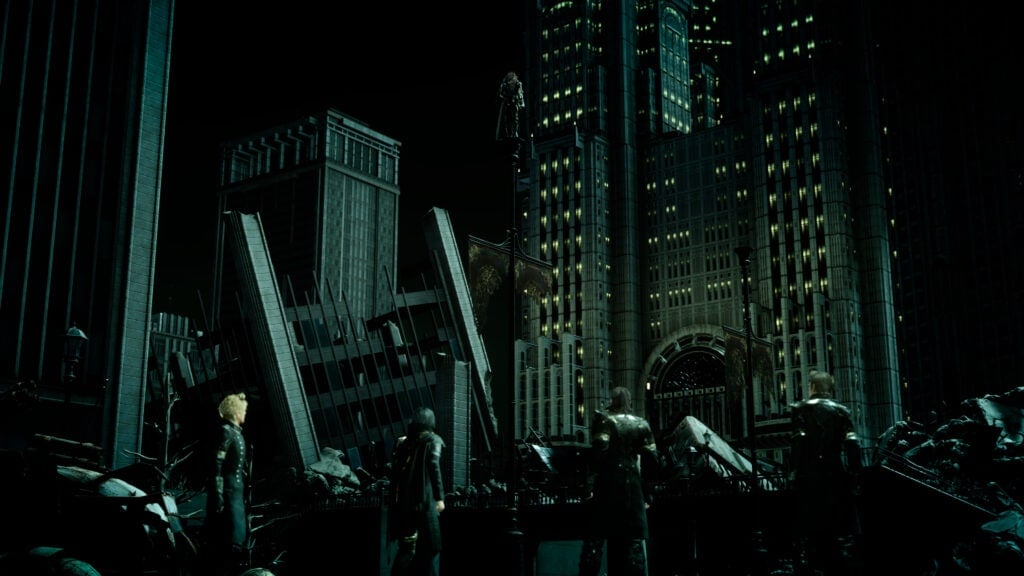
- Size: 700 miles²
Another Final Fantasy game, this time, XV. Returning back to single-player roots, Final Fantasy XV is set in the world of Eos, which resembles Earth in many ways. There are a total of four nations to explore: Lucis, Accordo, Tenebrae, and Nilfheim, coming in at around 700 miles².
Unfortunately, a lot of this is separated by mountains on which players can’t travel, as well as a ton of flat ground. As a result, the world of Final Fantasy XV doesn’t always feel its size.
12. Ghost Recon Breakpoint (2019)
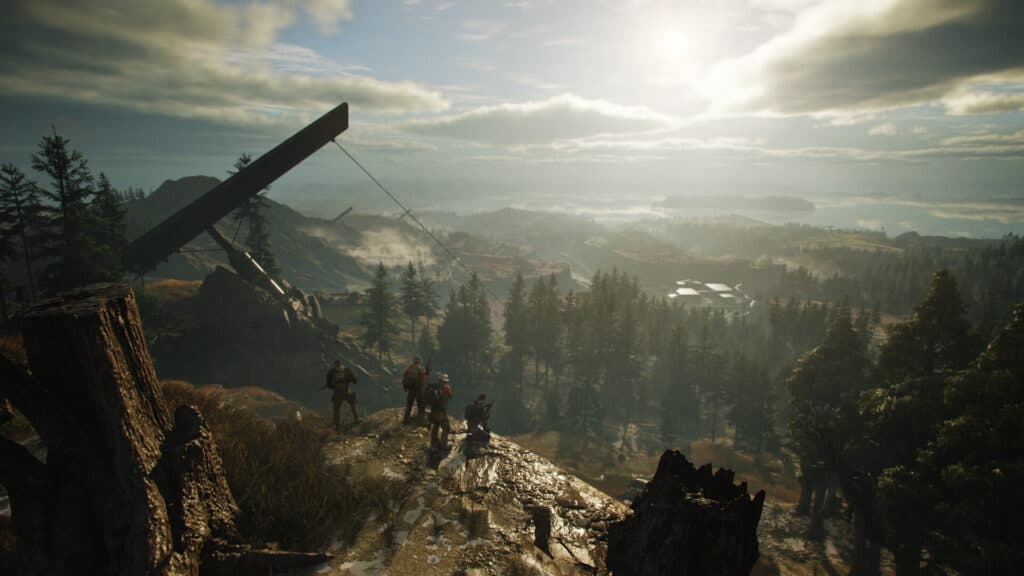
- Size: 781.9 miles²
The open-world island of Aurora is the setting for Ghost Recon Breakpoint, the 2019 sequel to Wildlands. There’s a ton of wilderness here, but you’ll still find different biomes to trudge your way through around the island’s enormous 781.9 miles² of terrain.
For us, Ghost Recon Breakpoint commits a cardinal sin that many similar open-world games do. It’s just a bit empty.
11. The Crew (2014)
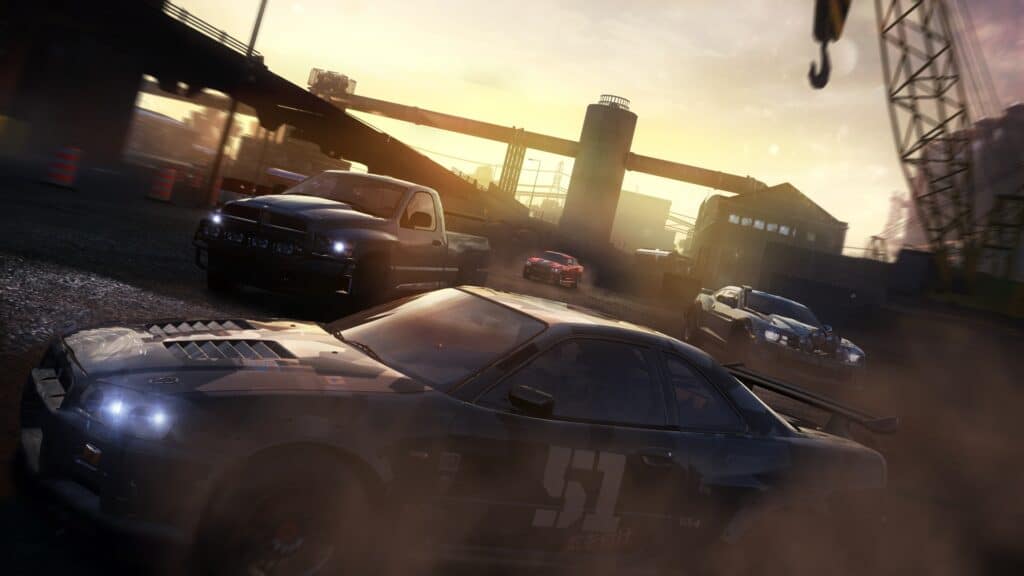
- Size: 1,900 miles²
With 1,900 miles² of playable space, would you be surprised if we told you The Crew takes place across the entire US? While the game obviously isn’t to scale, it takes an impressive stab at recreating every region of the country while remaining fun to actually race in. In total, it’s estimated that its version of the US takes around 45 minutes to drive from coast to coast.
Impressively, The Crew isn’t all dirt roads. It does make an effort to recreate many of the biggest cities in the US, which just brings a ton of variety into the game. An ambitious title, even if it wasn’t particularly a critical darling.
10. Fuel (2009)
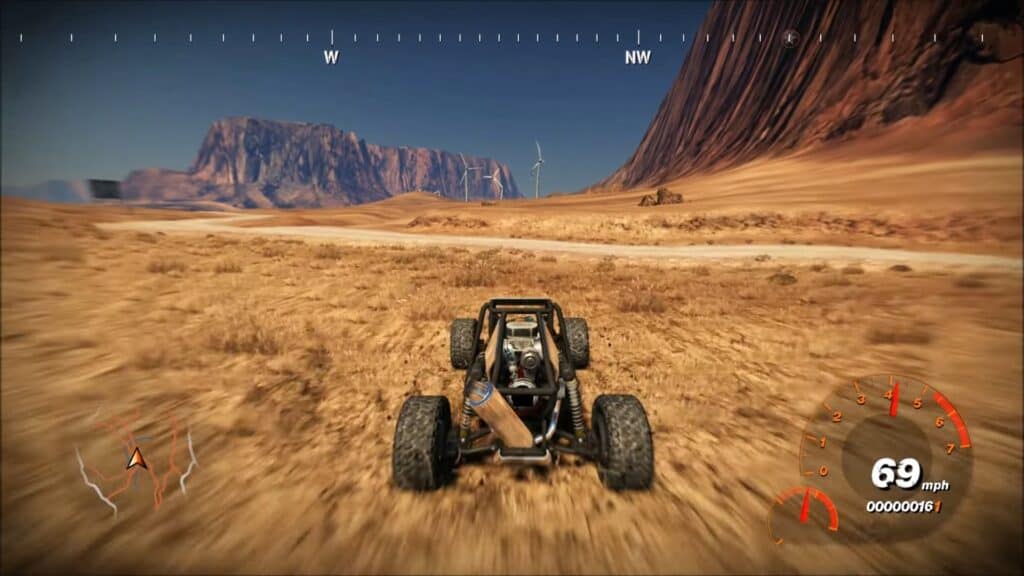
©Screenshot from Fuel.
- Size: 5,560 miles²
Fuel takes place in a post-apocalyptic rendition of the US, allowing you to race across the entire country in a recreation that spans an enormous 5,560 miles². For context, this is around the size of Connecticut, so it remains the biggest-ever racing map in any video game.
Due to the tech wizards over at Asobo Studio, Fuel‘s world is entirely seamless. There are no loading screens at all. It’s a feat we would celebrate in 2024, so to have managed it in 2009 is quite a feat.
9. Guild Wars Nightfall (2006)
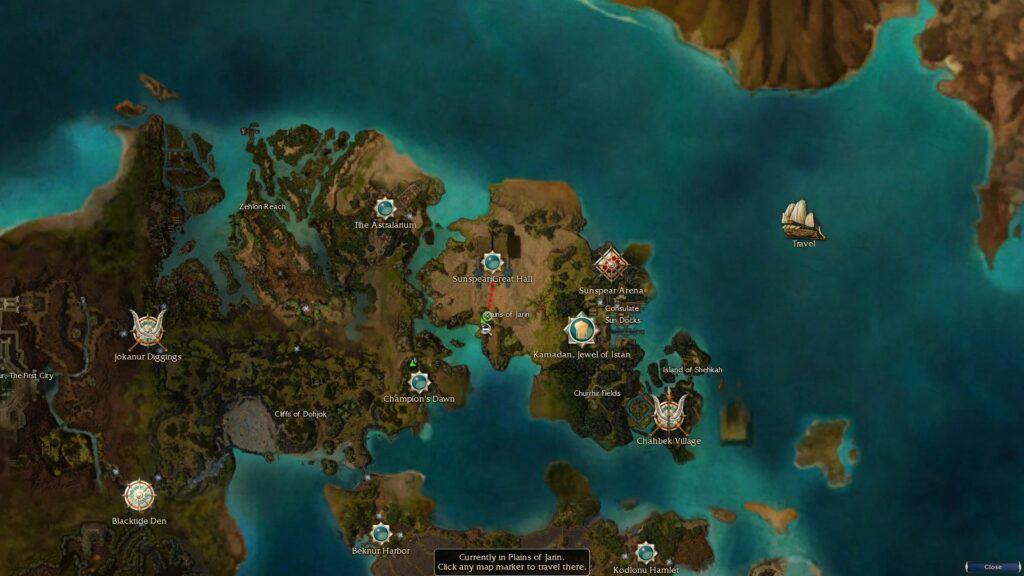
©Screenshot from Guild Wars Nightfall.
- Size: 15,000 miles²
Guild Wars Nightfall is set in the entire continent of Elona, beating out most of its MMO competitors by a considerable margin in this regard. With 15,000 miles² of playable space, it remains one of the biggest MMO maps ever made, allowing it to always feel fresh, even for long-time players of the game. This is a big part of the reason why it remains active almost two decades after its release.
8. ATLAS (2018)
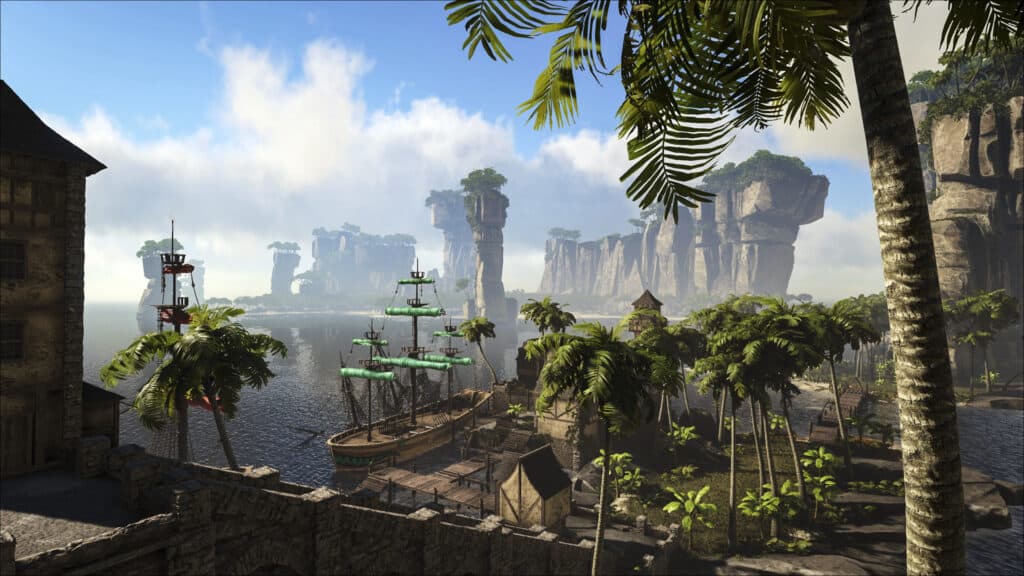
- Size: 17,300 miles²
When it comes to open worlds in MMOs, Atlas is the biggest of all time. Its enormous 17,300 miles² map is deceptive, due to the type of game it is. Most of the gameplay loop in Atlas consists of sailing the seas, meaning a lot of the map is just water. You scarcely see islands and civilization, but when you do, it makes all of the sailing worth it.
7. The Elder Scrolls II: Daggerfall (1996)
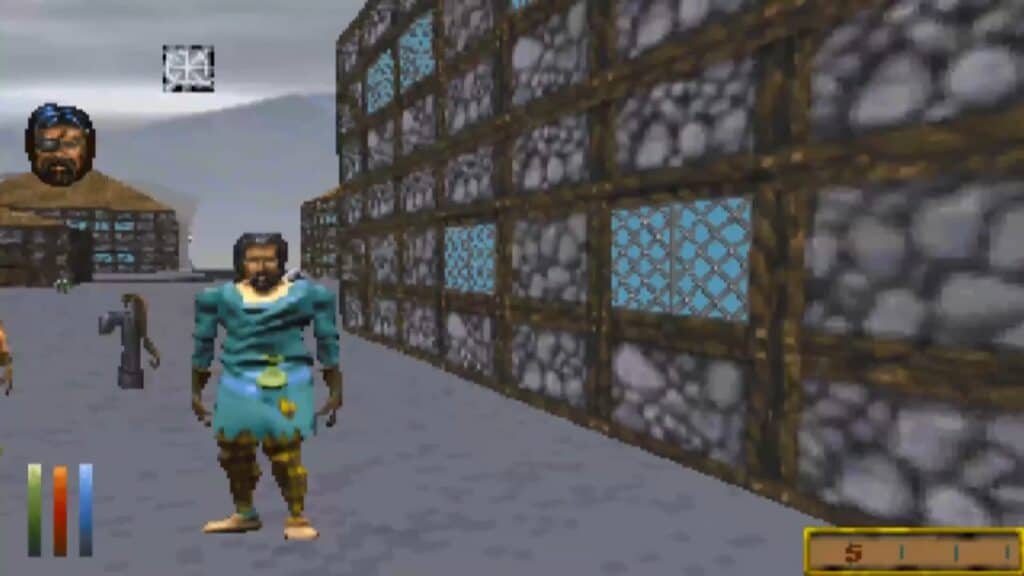
©Screenshot from The Elder Scrolls II: Daggerfall.
- Size: 62,000 miles²
The Elder Scrolls II: Daggerfall is almost comically large by any standard. Bethesda’s 1996 RPG takes place in Tamriel, specifically between the provinces of High Rock and Hammerfell. Unlike most of the other games in the series, which are known for their decently sized worlds crammed full of detail, The Elder Scrolls II: Daggerfall goes for sheer quantity, with 62,000 miles² of land to explore. For context, that’s almost as big as Great Britain.
In one huge way, the game is a trailblazer, in that most of its content is randomly generated. Bethesda didn’t actually create a game world the size of a small nation by hand. Still, when all was said and done, the game featured over 15,000 cities, towns, villages, and dungeons, meaning one playthrough was more than enough for most players.
6. Microsoft Flight Simulator (2020)
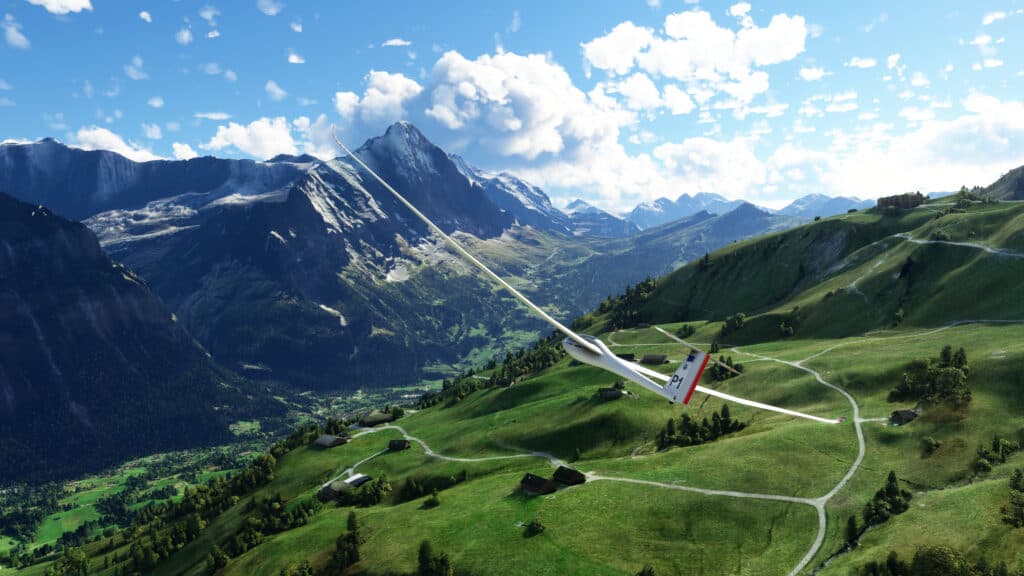
- Size: 196,940,000 miles²
Spanning the entire surface area of planet Earth to scale, Microsoft Flight Simulator is one of the most impressive game worlds ever created. The game uses map data from Bing Maps to fully map out the Earth, with even the most remote locations recreated in a near-unreasonable amount of detail. Better yet, across the game’s 196,940,000 miles², Microsoft has manually recreated many of Earth’s most recognizable landmarks, meaning you’re often going to fly around areas you recognize from the real world.
There’s no doubt about it: Microsoft Flight Simulator is a monumental achievement. With updates continuing to be released for the game, its recreation of Earth will only become more accurate in the years to come.
5. Minecraft (2011)
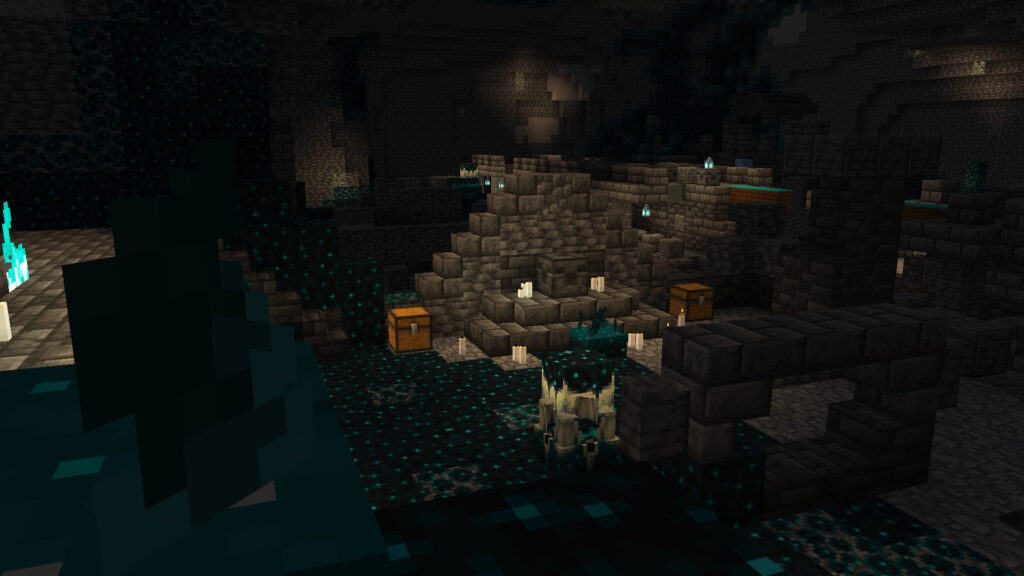
- Size: 1,500,000,000 miles²
When creating a new world in Minecraft, a random seed is assigned to determine the location of every single block. For each world, this accounts for a total of around 1,500,000,000 miles², with unlimited possibilities due to the randomness of the seeds. Minecraft does an incredible job of creating the illusion of an infinite world, although you technically can go ahead and reach the end (not to be confused with the End!). But good luck trying.
4. Starfield
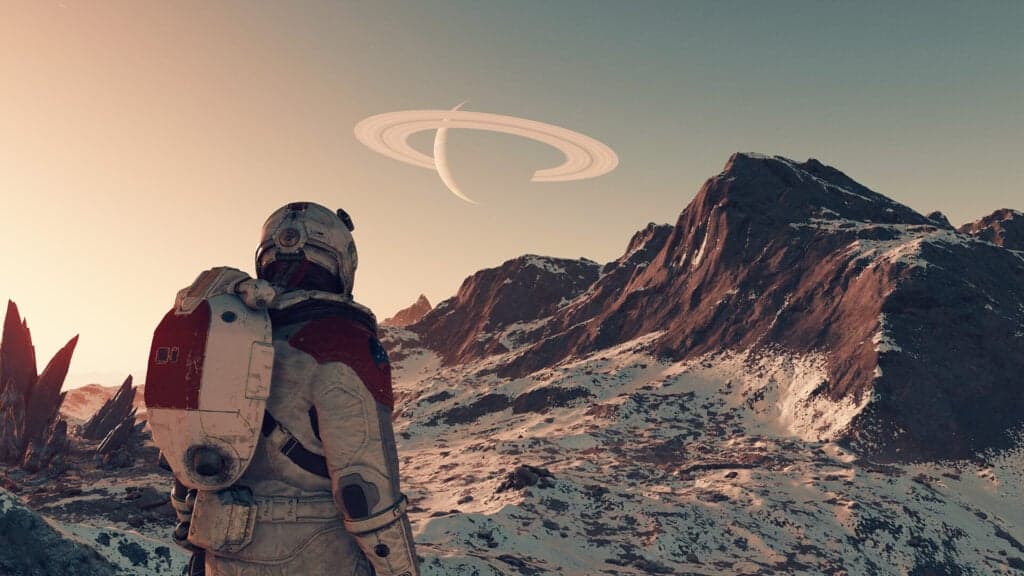
- Size: 1692 planets
Bethesda’s newest RPG Starfield might not have lived up to everyone’s lofty expectations, but in the size department, it spares no expense. There are a total of 1692 planets in the game, of which there are 1437 that you can actually land on.
The surface of most of the planets in Starfield is procedurally generated, with their total landmass each estimated to stand at around a 1:20 scale. Not only will you get a new experience on each planet every playthrough, but you’ll likely never run out of planets to explore.
3. Spore (2008)
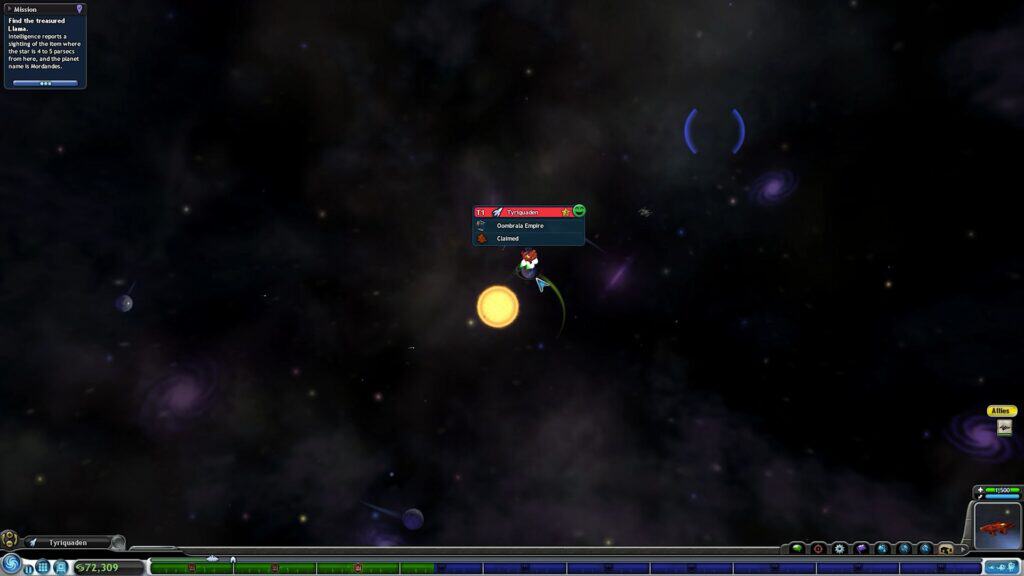
©Screenshot from Spore.
- Size: 500,000 planets
Spore is the latest work from The Sims designer Will Wright, taking players from the very beginning of a species all the way to the space age. It’s an enormously ambitious project with a robust creature creator that makes every encounter with a new species unique. It doesn’t always hit the mark, but when it does, there’s nothing quite like it.
The true scale of Spore doesn’t truly become apparent until you reach the space age. Here, over 500,000 planets become available for exploration, each with its own unique species generated by the game. It might be showing its age at this point, but Spore is a game you have to try at least once.
2. Elite Dangerous (2016)
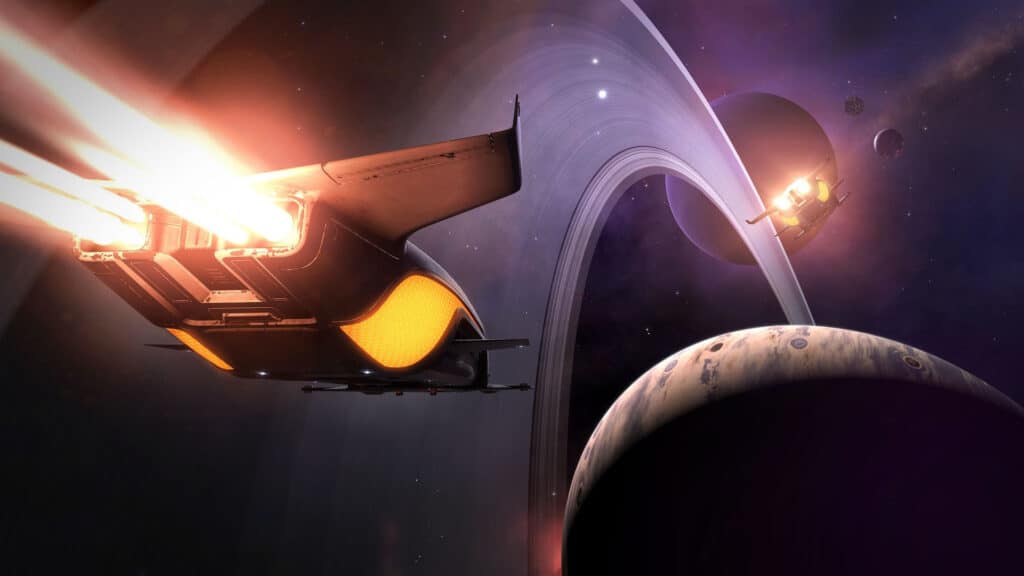
- Size: 400 billion star systems
We’re well into the truly absurd scales at this point. Elite Dangerous touts a 1:1 remake of the Milky Way galaxy, covering an estimated 400 billion star systems in total. You command your own spaceship, and try to explore as much of the galaxy as possible. It’s a game that really begins to show the potential of procedurally generated content, and there’s simply no way that players have seen everything that Elite Dangerous’ galaxy has to offer.
The game’s Odyssey expansion allowed players to explore all of these star systems on foot with ground missions. How can you even begin to criticize something this ambitious, much less something that actually pulls it off? Elite Dangerous is one of the biggest open-world titles ever, and its number two spot on this list is well deserved.
1. No Man’s Sky (2016)
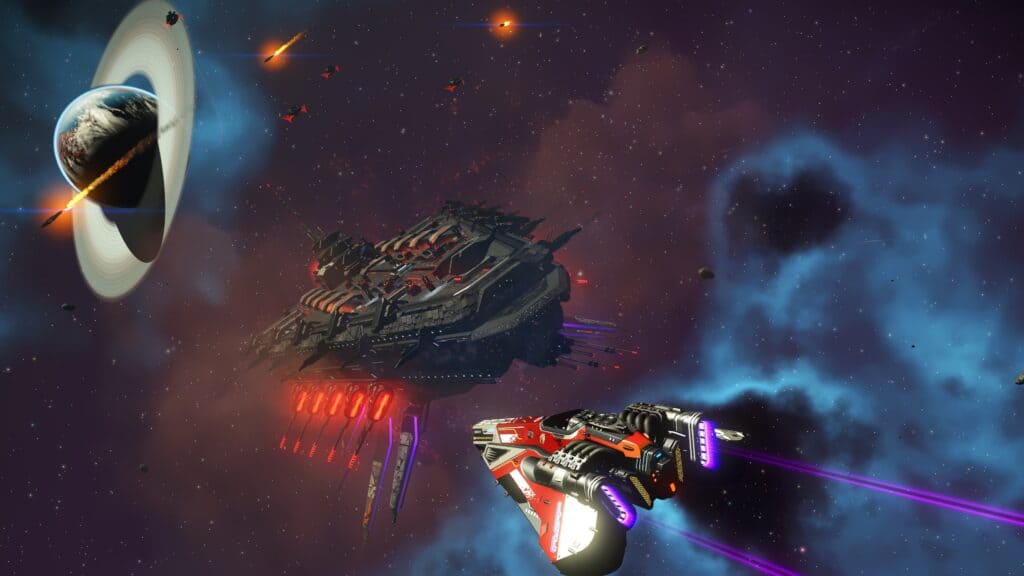
- Size: 256 galaxies
How do you even begin to describe the scale of No Man’s Sky? No game has ever achieved what it has, with 256 entire galaxies to explore, each hosting over 4.2 billion regions. These regions then have anywhere between 205 and 605 star systems each, which in turn have two to six planets/moons each. If you’re not keeping track, don’t worry about it. It’s more content than any human could ever conceivably explore, and that’s all you need to know.
It’s extremely rare that these types of space exploration titles actually live up to the hype and deliver on seemingly impossible promises. But if any title has managed it, it’s No Man’s Sky.
The image featured at the top of this post is ©Bethesda.
